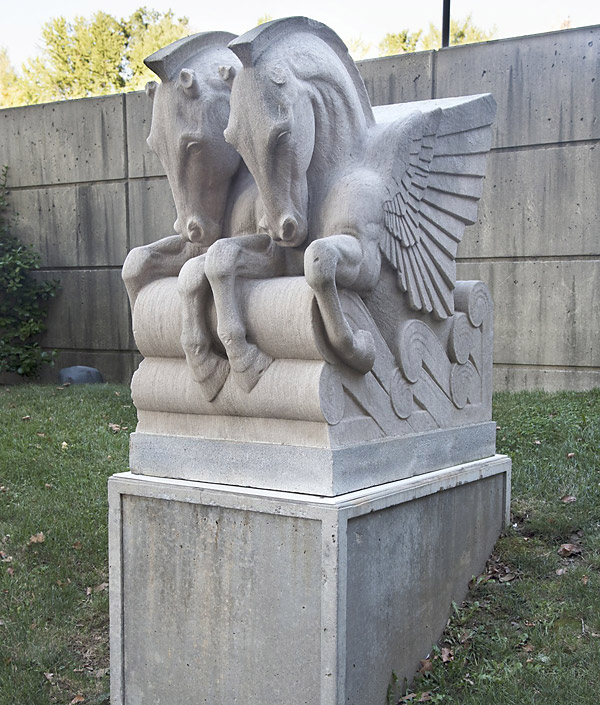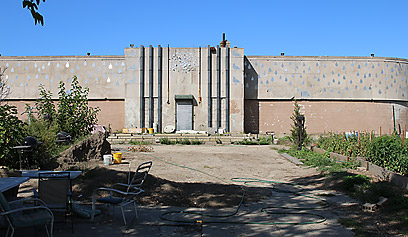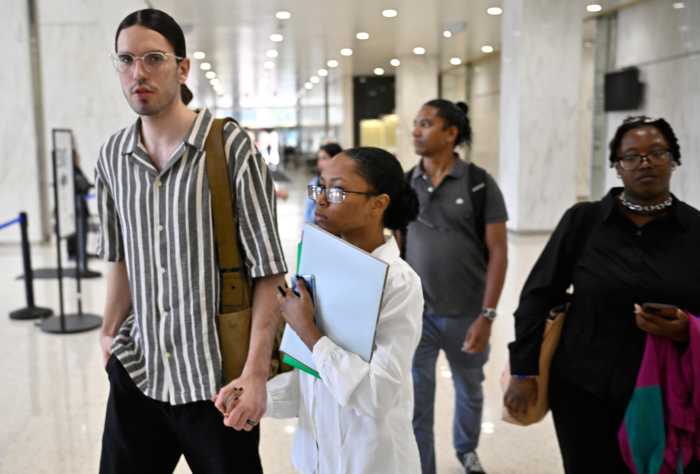They want to make Southern Brooklyn history.
The city must recognize the role Gravesend and Coney Island played in shaping the borough by landmarking two historic sites, local preservationists say.
The Landmarks Preservation Commission is clearing a vast backlog of proposed landmarks that never got a vote on designation — including the Lady Deborah Moody House in Gravesend and the Coney Island Pumping Station. Local historians and elected officials showed up at a hearing on the Brooklyn sites on Oct. 8 to argue that in a rapidly changing borough, the only way to preserve the its history is to protect its most historic and distinctive buildings before they are overtaken by development.
“The structure’s mere presence acts a constant reminder to residents of the area that there is culture and history in Southern Brooklyn, too,” said Councilman Mark Treyger (D–Coney Island) of the Moody House. “Not everything can be a condominium. We must preserve this integral piece of southern Brooklyn’s infancy.”
The Moody House — first proposed for landmarking in 1966, the year after the commission was established — is named for Lady Deborah Moody, who founded Gravesend 1643 and was the first female landowner in colonial America.
It is the only remaining stone Dutch farmhouse in Brooklyn, and one of the last nationwide that occupies its original site, according to a commission study. Moody probably never lived in the house on Gravesend Neck Road between Van Sikclen Street and McDonald Avenue — instead, the prominent Van Sikclen clan likely erected the house in the early 1700s, the report states. It is privately owned and went up for sale earlier this year.
Preservationists credit the Coney Island Pumping Station with literally saving the neighborhood in the 1930s and ’40s. Firefighters were helpless against blazes that repeatedly engulfed the amusement district, because local water pressure was so poor, but the pumping station changed that, historians said.
Architect Irwin Chanin, known for the 46th Street Theater and landmarked Chanin building in Manhattan, designed the Art Deco station in 1938. It was first proposed as a landmark in 1980, a few years after it went out of service, but has stood largely abandoned ever since. The building’s most distinguishing features — four Art Deco double-Pegasus sculptures — were moved to the Brooklyn Museum in 1981 due to vandalism, where they remain today. Preservationists want to turn the city-owned facility on Neptune Avenue at W. 23rd Street abutting Coney Island Creek into a museum or other public space and return the mythic marble horses to their rightful home. But they need the landmarks commission to prod the city in that direction by designating the site, one architect said.
“Chanin’s public work today is protected almost singularly by its savage dispersal — its own elegant marble statues resting at the Brooklyn Museum awaiting your vote for reunification,” Sean Khorsandi told the commission at the hearing.
The Coney Island amusement district is already home to several landmarks, including the Cyclone roller coaster, the Parachute Jump, and the now-under-renovation Child’s Restaurant, but neighboring residential districts need a landmark to increase public interest in the largely low-income communities west of the roller coasters, another supporter said.
“This aligns with the DeBlasio administration’s initiatives on income inequality, because it would give a landmark to a neighborhood that is basically public housing,” said Boardwalk impresario Dick Zigun.
The Moody House and the pumping station are among seven backlogged Brooklyn landmark proposals that have seen little movement from the commission other than a handful of public hearings decades ago. One critic accused the landmarks panel of Manhattan-centric myopia.
“There is no doubt in my mind that if the [Moody house] stood on a street in Manhattan, it would have been declared a landmark many years ago and thus preserved,” said Eric Ierardi, president of the Gravesend Historical Society.
The other languishing Brooklyn landmark proposals discussed at the hearing were:
• Green-Wood Cemetery (first proposed in 1981).
• St. Barbara’s Roman Catholic Church in Bushwick (first proposed in 1980).
• The cast iron-clad 183-195 Broadway Building in Williamsburg (first proposed in 1980).
• The Ukranian Church in Exile in Williamsburg (first proposed in 1966).
• St. Augustine’s Roman Catholic Church and Rectory in Park Slope (first proposed in 1966).
The commission will decide whether to move forward on the landmarking proposals in early 2016. Sites that survive the purge will be fast-tracked for landmarking by the end of 2016, according to the commission.


























